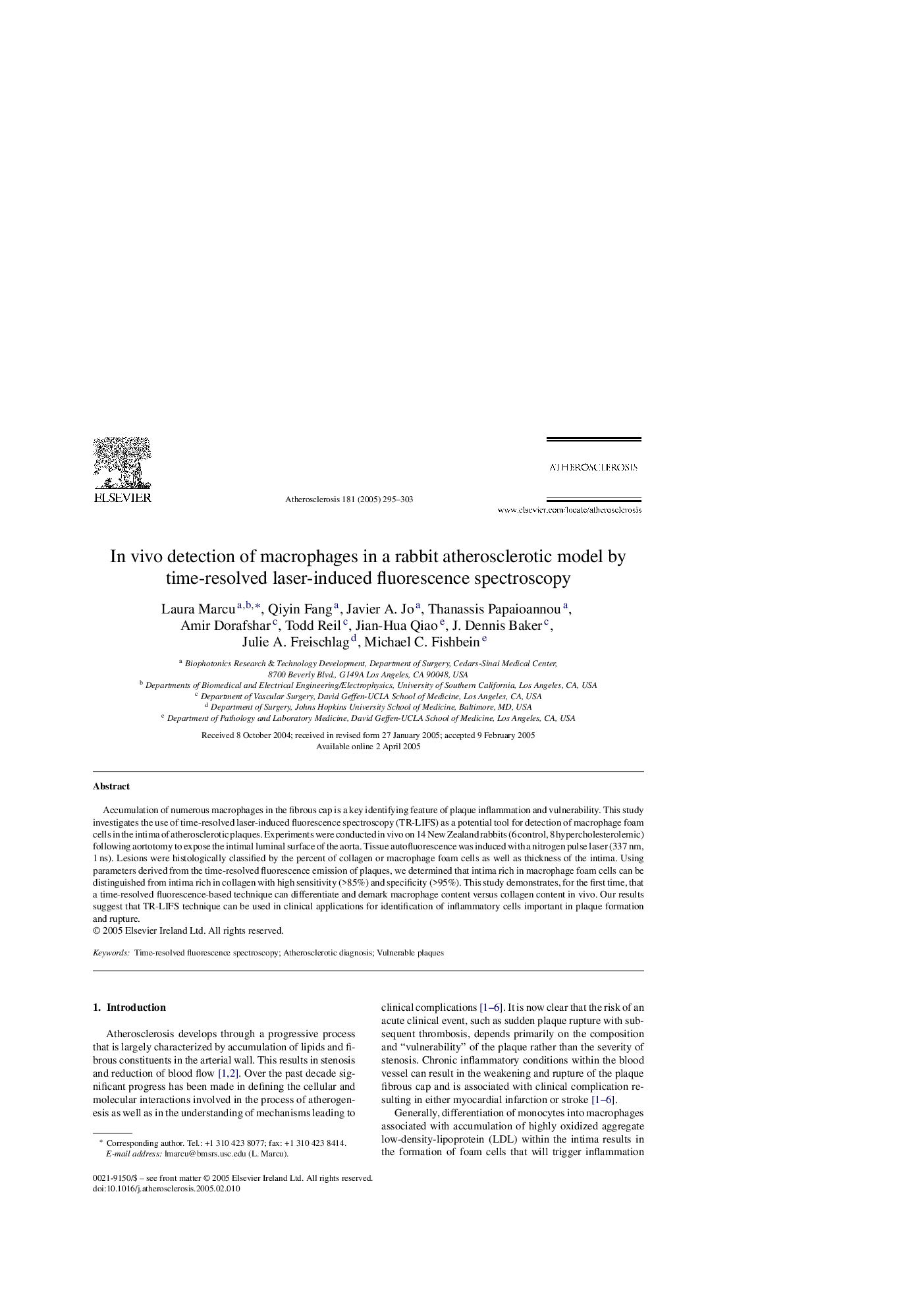| Article ID | Journal | Published Year | Pages | File Type |
|---|---|---|---|---|
| 9157596 | Atherosclerosis | 2005 | 9 Pages |
Abstract
Accumulation of numerous macrophages in the fibrous cap is a key identifying feature of plaque inflammation and vulnerability. This study investigates the use of time-resolved laser-induced fluorescence spectroscopy (TR-LIFS) as a potential tool for detection of macrophage foam cells in the intima of atherosclerotic plaques. Experiments were conducted in vivo on 14 New Zealand rabbits (6 control, 8 hypercholesterolemic) following aortotomy to expose the intimal luminal surface of the aorta. Tissue autofluorescence was induced with a nitrogen pulse laser (337Â nm, 1Â ns). Lesions were histologically classified by the percent of collagen or macrophage foam cells as well as thickness of the intima. Using parameters derived from the time-resolved fluorescence emission of plaques, we determined that intima rich in macrophage foam cells can be distinguished from intima rich in collagen with high sensitivity (>85%) and specificity (>95%). This study demonstrates, for the first time, that a time-resolved fluorescence-based technique can differentiate and demark macrophage content versus collagen content in vivo. Our results suggest that TR-LIFS technique can be used in clinical applications for identification of inflammatory cells important in plaque formation and rupture.
Related Topics
Health Sciences
Medicine and Dentistry
Cardiology and Cardiovascular Medicine
Authors
Laura Marcu, Qiyin Fang, Javier A. Jo, Thanassis Papaioannou, Amir Dorafshar, Todd Reil, Jian-Hua Qiao, J. Dennis Baker, Julie A. Freischlag, Michael C. Fishbein,
